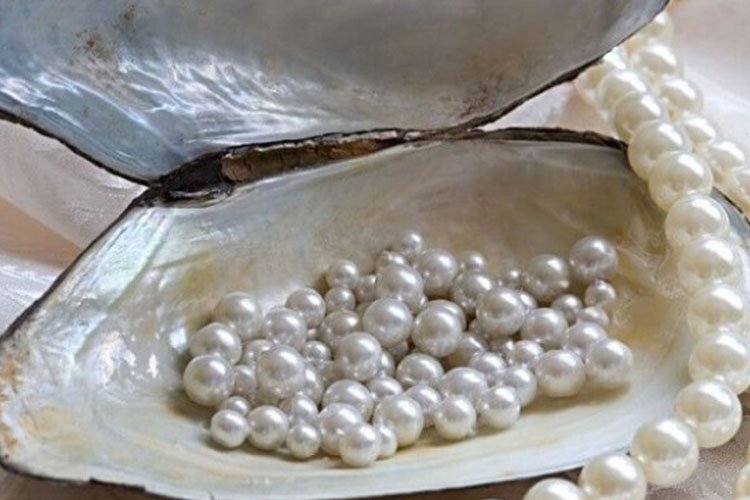Freshwater pearl

The freshwater pearl!
The pearl is a small sphere of mother-of-pearl, secreted by certain mollusks to neutralize foreign bodies such as grains of sand, parasites, insinuated between the mantle and the shell. The cultured freshwater pearl is produced in mussels found in lakes and rivers.
These mussels are in fact large avicules, up to 20cm, which can produce around forty pearls unlike saltwater oysters which will produce a maximum of five.
For freshwater pearls, only the piece of epithelium is introduced although new techniques using cores are increasingly being developed for the production of these pearls.
The classification of the internationally cultured pearl is as follows:
Totally clean: Top Gem
The surface of the pearl has no imperfection. The surface is smooth and uniform. There are no inequalities in the layers of the mother-of-pearl. The luster is very strong.
Very few defects: AAA
The surface has one or a few imperfections on one side of the pearl. When looking at the most advantageous part of the pearl, it shows a clean surface. The defects are no longer visible when the pearl is mounted as a jewel. Some irregularities in the layers of the mother-of-pearl. A very strong or excellent luster.
Some flaws: AA
The pearl has imperfections all around the surface. Imperfections are minor and do not affect the overall appearance and consistency of the pearl. The defects will be visible when the pearl is mounted as a jewel. There is no major damage to the pearl. The hammered or orange peel aspect of the pearl should not be too visible. The luster will be good or average.
Lots of flaws: A
The pearl has visible imperfections. Imperfections cannot be concealed by fitting the bead into a jewel. The luster will be good or average. The color of the pearls vary depending on the species of mollusk used (the host of the pearl), the color of the implant as well as the different elements present in the water during culture. Nowadays there is still another technique developed by man to give us more choice in shades.
Although China, the United States, and Japan are all producers of freshwater cultured pearls. China remains the market leader across the world.
Little tip:
To recognize the authenticity of cultured pearls, you just need to rub them against each other. Usually proceed at the clasp for discretion. Indeed, if they scratch each other, it is because they are real pearls.
On the other hand, if they do slip and do not get scratched then these are just imitations.
You will discover here, a collection of refined and delicate jewelry to enhance these pearly beauties.
Leave room to your desires!



